Losing midfield lynchpin Edson Alvarez to a serious injury in the opening game did not help, but there are deeper issues at play here and Lozano faces real pressure from all sides.
10th: United States
Some will pin the USMNT’s disastrous group-stage exit on a moment of madness, but plenty of others will be looking for answers in the bigger picture.
Tempers flared in an ill-tempered defeat by Panama, as Gregg Berhalter’s men played more than 70 minutes with a man disadvantage after Timothy Weah’s early red card. But questions still linger about creativity and forward drive from midfield in a team still seemingly reliant on Christian Pulisic for a moment of attacking inspiration.
In the all-or-nothing decider against Uruguay, the U.S. funnelled most of their attacks out wide, taking just 24 per cent of their touches in the middle third and mustering only six shots on goal. Aside from Gio Reyna dropping deeper to try to combine from his left-wing role, the midfield trio were disconnected, completing just 31 passes between them in the first half.
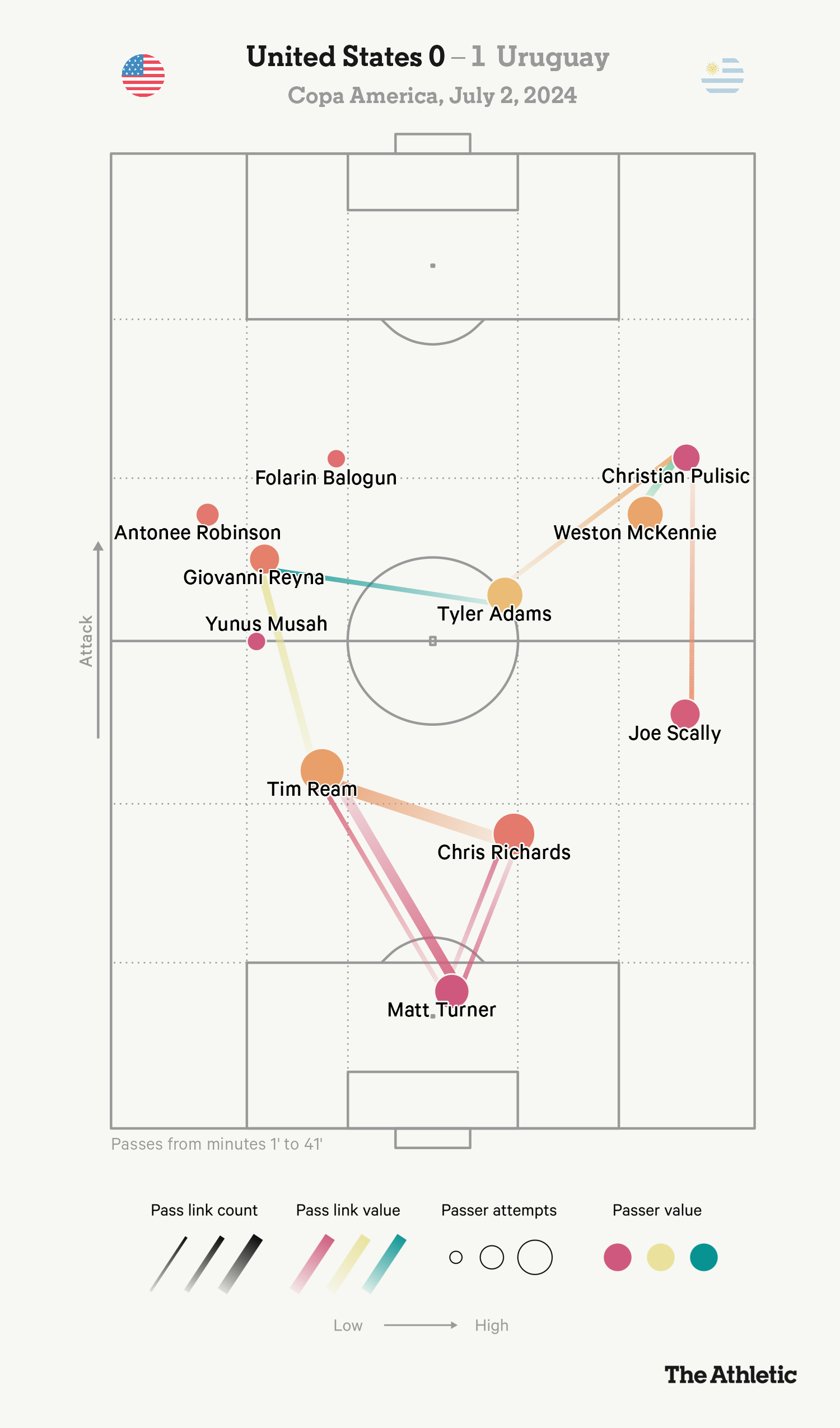
The performances of Folarin Balogun were a shining light in an otherwise disappointing campaign, netting twice and looking authoritative in a No 9 spot the USMNT have long struggled to fill.
But, with Berhalter’s future hanging in the balance, this dress rehearsal for the 2026 World Cup provided more questions than it did answers.
9th: Costa Rica
It was always going to be an uphill task for Costa Rica to qualify from Group D, but they leave the competition with their heads held high.
Following the sudden retirement of goalkeeper Keylor Navas in late May, Los Ticos arrived at the tournament with the youngest squad, averaging just 17.7 caps per player. Only two, Francisco Calvo and Joel Campbell, had played more than 30 times on the international stage.
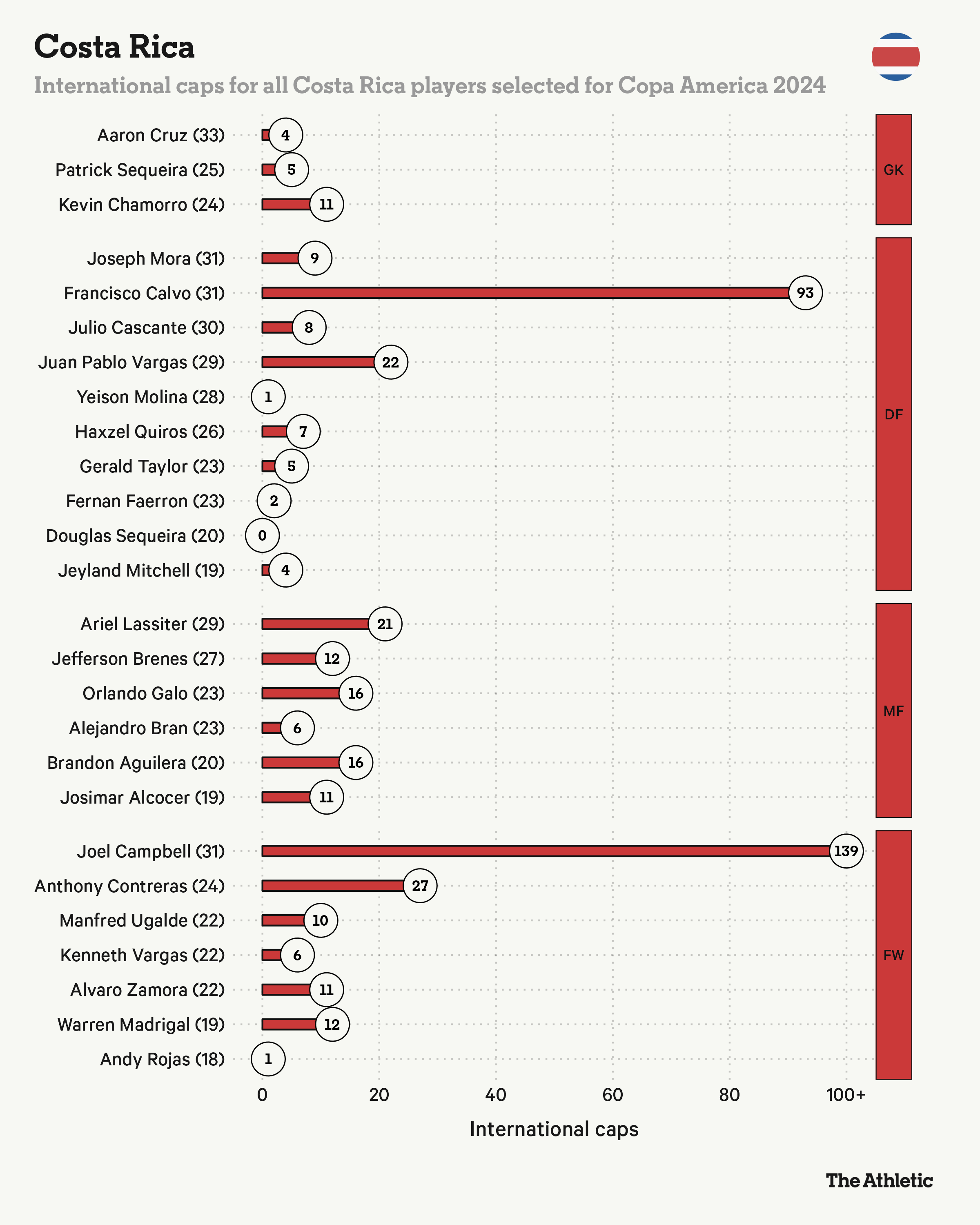
Despite that, a goalless draw with Brazil showed them at their resilient best, while a win over Paraguay on the final day will give this fresh generation belief they can compete at the highest level.
It was not always pretty — Costa Rica averaged just 31.7 per cent of the ball throughout their three group games and had just nine shots on goal – but four points and valuable competition experience represent a job well done.
8th: Ecuador
Squeezing through in second place in Group B, Ecuador recovered well from their opening-day defeat by Venezuela. Still, for a side that craves possession and control under coach Felix Sanchez, a nervy 0-0 draw with Mexico was not the most convincing route through.
In a game littered with technical errors and lapses of concentration, La Tri also struggled with their decision-making in the final third, with Enner Valencia notably dragging a shot wide on the counter-attack in the dying moments.
“We played a final to qualify and that cost us possession of the ball,” Sanchez summarised after the game. “We suffered, but I have to congratulate the players for showing that personality.”
Nonetheless, Ecuador are a side built on solid defensive foundations, enjoying a veritable golden generation throughout the spine of the team. Defenders Piero Hincapie and Willian Pacho are both accomplished one-on-one defenders, while Chelsea’s Moises Caicedo is technically gifted and tenacious without the ball, capable of turning any midfield battle in his side’s favour.
They don’t go into a quarter-final with Argentina anywhere near favourites, but they are capable of making it a tricky, potentially dangerous game.
7th: Canada
One goal was all Canada needed to qualify from Group A; Jonathan David’s late strike against Peru meant a steady 0-0 draw with Chile was enough to see them through.
Becoming more clinical in front of goal will certainly be at the forefront of Jesse Marsch’s mind, but he will be pleased at how quickly this team have bought into his front-footed methods. No team have made more tackles than the Canadians, while their direct speed of 2.1 — a metric that measures how far the team moves the ball towards the opposition goal per second — is also the quickest at this summer’s Copa America. Intensity off the ball is being matched with directness on it.
Having acquitted themselves well against world champions Argentina, their knockout clash with a fired-up Venezuela will present a different challenge altogether. They like to press high and move the ball quickly, too, setting up what should be a fascinating physical clash.
6th: Panama
Thomas Christiansen continues to take Panama to new heights.
Since taking over as manager four years ago, Los Canaleros have risen almost 40 places in the FIFA world rankings, reaching a Gold Cup final and now the Copa America knockout stages for the first time. Even in contentious circumstances, that win over the USA will live long in the memory.
Much was made of Panama’s physicality in the build-up to the tournament, but Christiansen has helped to instil an attractive possession-based style from the top down, building up in a patient 3-2-5 shape that looks to stretch the pitch and give midfield maestro Adalberto Carrasquilla the space to progress the ball into the final third.
“They have implemented a European, a Spanish style since the manager arrived,” said Colombia boss Nestor Lorenzo before their quarter-final tie. “It took Uruguay a lot to open the scoring against them in the opening game, so we’re going to respect them as they can cause us problems.”
5th: Venezuela
Without doubt, the feelgood story of this summer’s competition.
Venezuela are the only South American nation never to have qualified for a World Cup and one of two still to lift the Copa America trophy, yet they escape from Group B as undisputed winners, with nine points from nine. Real spirit and belief is coursing through Fernando Batista’s side, now playing an aggressive brand of football characterised by a tireless high press.
As the graphic below illustrates, they have been effective at stealing the ball high up the pitch and moving it quickly towards goal. They are the team with the most shots after high turnovers in the competition.
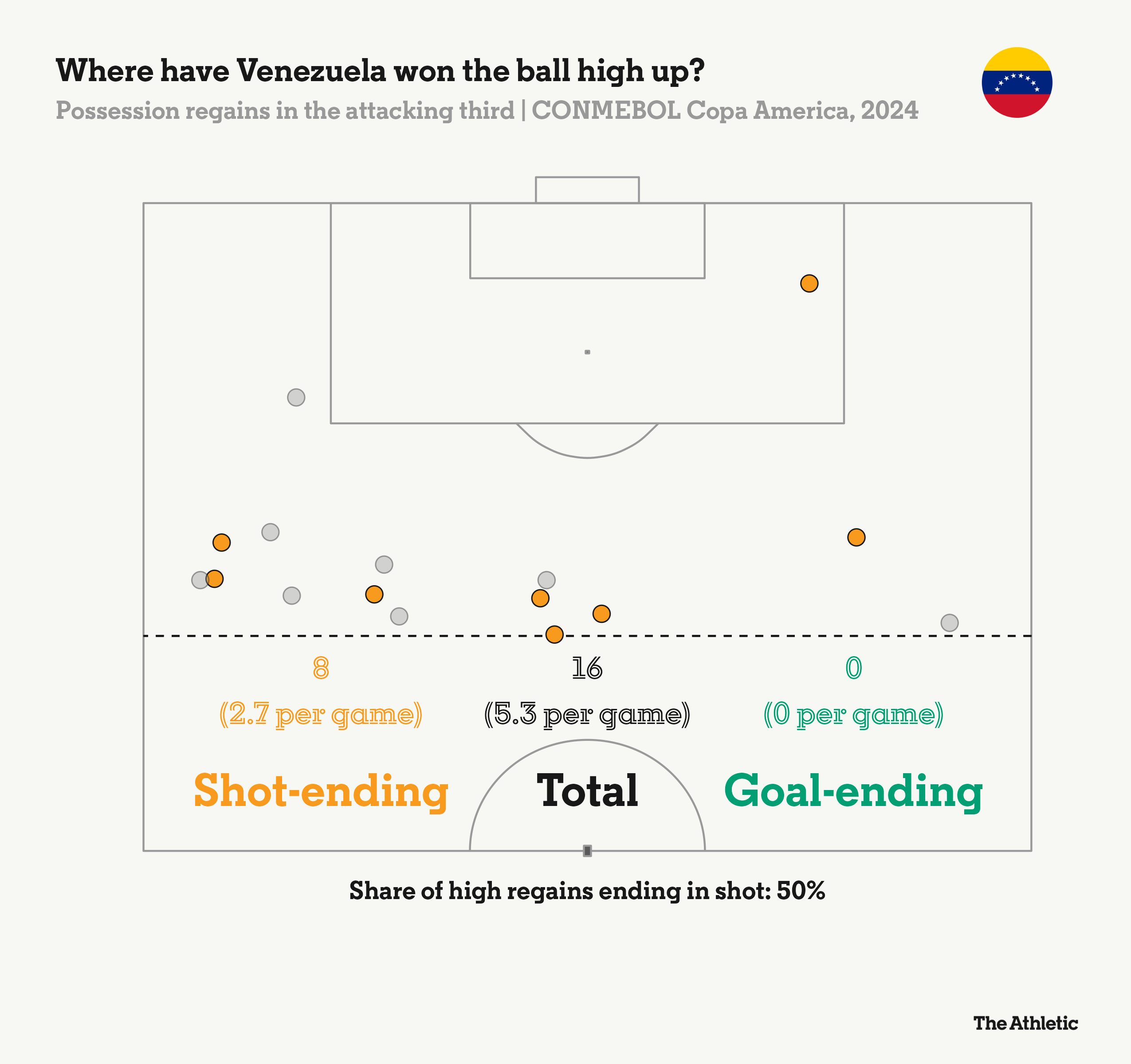
Veteran striker Salomon Rondon has led the charge, a hard worker at the top of the team, while zippy wingers Yeferson Soteldo and Eduard Bello have brought pace and penetration out wide. Added to the defensive enthusiasm of midfield duo Yangel Herrera and Jose Martinez, flanked by the freight-train runs of breakout full-back Jon Aramburu, confidence has risen game-by-game, culminating in a dominant win over Jamaica in front of 20,000 adoring fans.
“Mano, tengo fe” has been adopted as the unofficial slogan of this tournament run — “Bro, have faith”. One more win and they equal their best Copa America finish.
4th: Brazil
Brazil may not have lost during the group stage but, of the four big hitters still in the tournament, they have looked the most beatable.
Results ranged from the sublime to the ridiculous on their way to a group decider with Colombia on Tuesday. In the 0-0 draw with Costa Rica, they racked up 50 touches in the attacking penalty area, conceding just two at the other end, while a 4-1 battering of Paraguay was about as joyous a Brazilian performance as you are likely to see.
Experienced coach Dorival Junior has spoken of the need for patience with this side, saying his team cannot skip steps in their development and that there will be fluctuations in form along the way. He also admitted they faced issues in their build-up play against Colombia, having lost the ball seven times in their defensive third against a coordinated high press.

Even without the suspended Vinicius Junior for their mouth-watering clash with Uruguay, Brazil possess more than enough individual quality to navigate the knockouts. But this is a team still finding their feet under a new coach after a tough year and, given their route to the final, anything from here would be a bonus.
3rd: Colombia
You don’t go 26 games unbeaten by accident. Colombia are hungry, well-drilled, and bursting with ideas in attack.
Charismatic coach Lorenzo has found an exciting formula with his 4-3-1-2, bringing James Rodriguez in from the cold and setting him free behind the two strikers. With 11 chances created and three assists, his technical ability and weight of pass in those attacking spaces have lifted the national team to the next level.
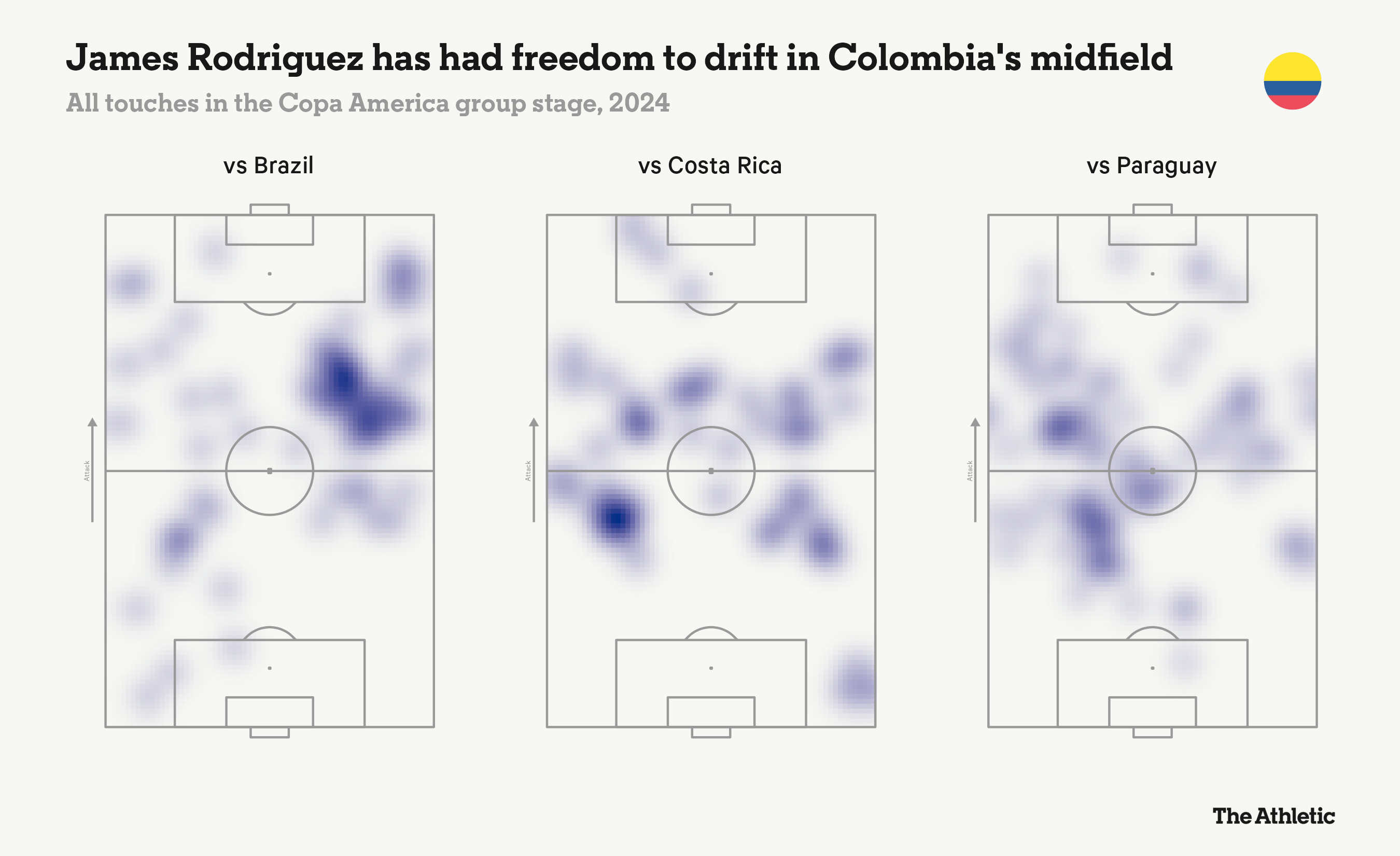
Flexibility is a feature of this Colombia side, particularly potent in wide areas as full-backs push on to join the attack. Holding midfielder Jefferson Lerma is happy to sit deep and hold the fort, allowing No 8s Richard Rios and Jhon Arias to drift into the half-spaces and combine with wide players in triangles. Daniel Munoz already has two goals from right-back, a direct consequence of his license to roam down the flank.
The Brazil game was a test of their mettle, particularly after a shaky start, but the resilience of a side who haven’t tasted defeat in over two years shone through. That spirit will not be easy for any team to overcome.

GO DEEPER
More polyester than pizzazz – rating Copa America manager fashion
2nd: Argentina
Five goals, none conceded; Argentina made predictably light work of Group A. It means they have now kept clean sheets in eight of their past nine competitive games.
Even if the results look tight, the underlying numbers tell us Lionel Scaloni’s side have been dominant throughout. No team comes close to their expected goal differential (xGD) of +6.6, the quality of their chances suggesting they should have won all of their group games by at least two goals.
Encouragingly, they were able to rotate in their match against Peru without their standards dropping at all. Without Lionel Messi, it was tournament top scorer Lautaro Martinez who stepped up with a brace, while a changed midfield including Giovani Lo Celso, Leandro Paredes and Exequiel Palacios controlled the game with minimal fuss.
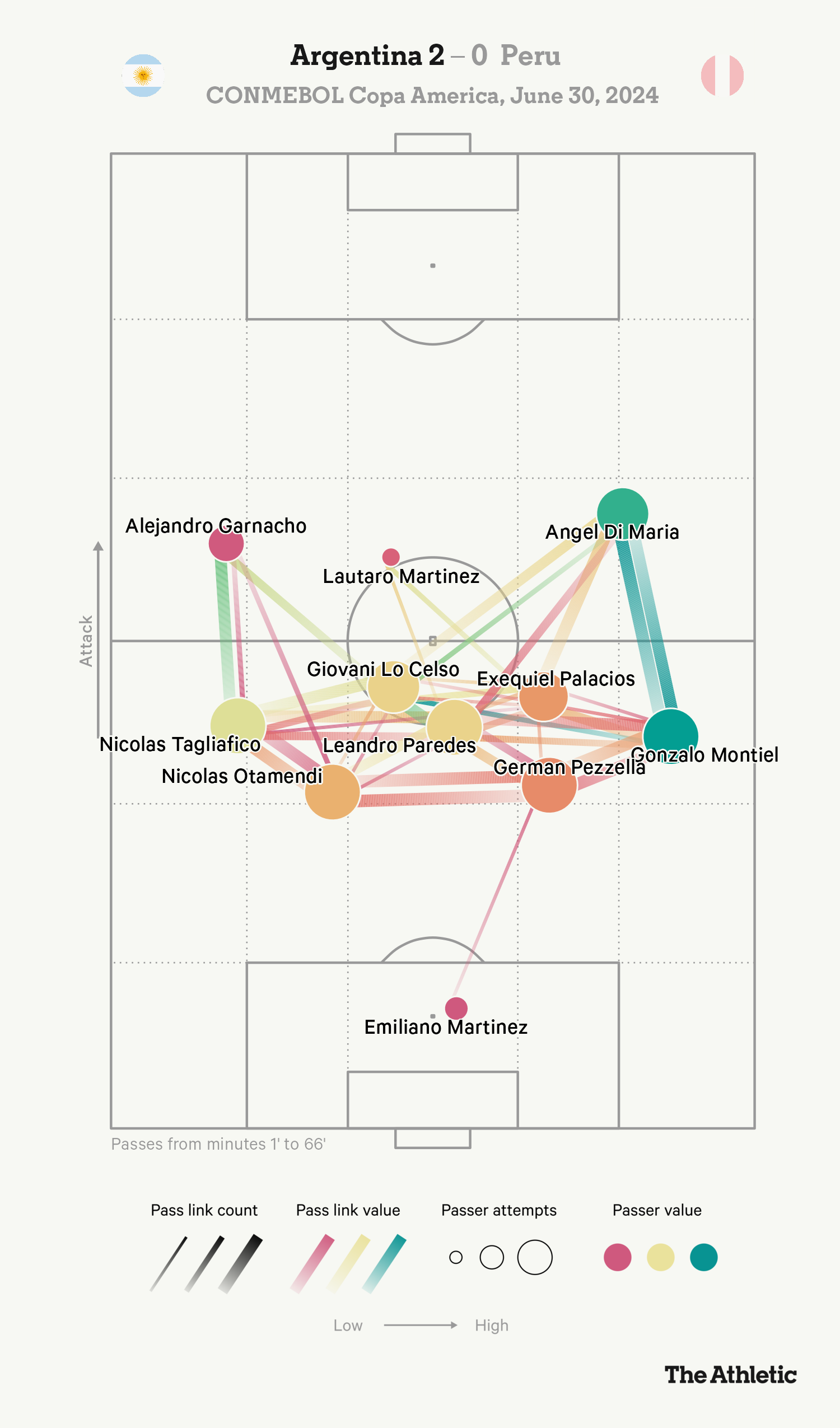
Ecuador up first, then Canada or Venezuela in a potential semi-final; Argentina are in a strong position to reach a third consecutive major tournament final. Guard against complacency and the quality should tell.
1st: Uruguay
The most frightening thing about Uruguay’s rampant run through the group stage is the sheer variety on show. They can win ugly — dig in, stay compact, and stick to their defensive duties as if their lives depend on it — but they can also steamroll through you with plenty of attacking solutions with the ball at their feet.
A look at the stats tells the story; Marcelo Bielsa’s side lead the way at the Copa America for recoveries in the attacking third (19), aerial win rate (65.1 per cent), true-tackle win rate (62.2 per cent) and pressing intensity (7.8 passes allowed per defensive action). Going forward, they have scored the most goals (nine), completed the most crosses (23), picked out the most through balls (13) and launched the most direct attacks (13).
Such intensity mixed with technical skill and athleticism make Uruguay a relentless team to keep at bay. If they can dominate possession, as they did against Bolivia below, they will throw men forward, overload the attacking third and look to pen the opposition in. If not, they will use their direct runners and transitional power to hit you on the break.
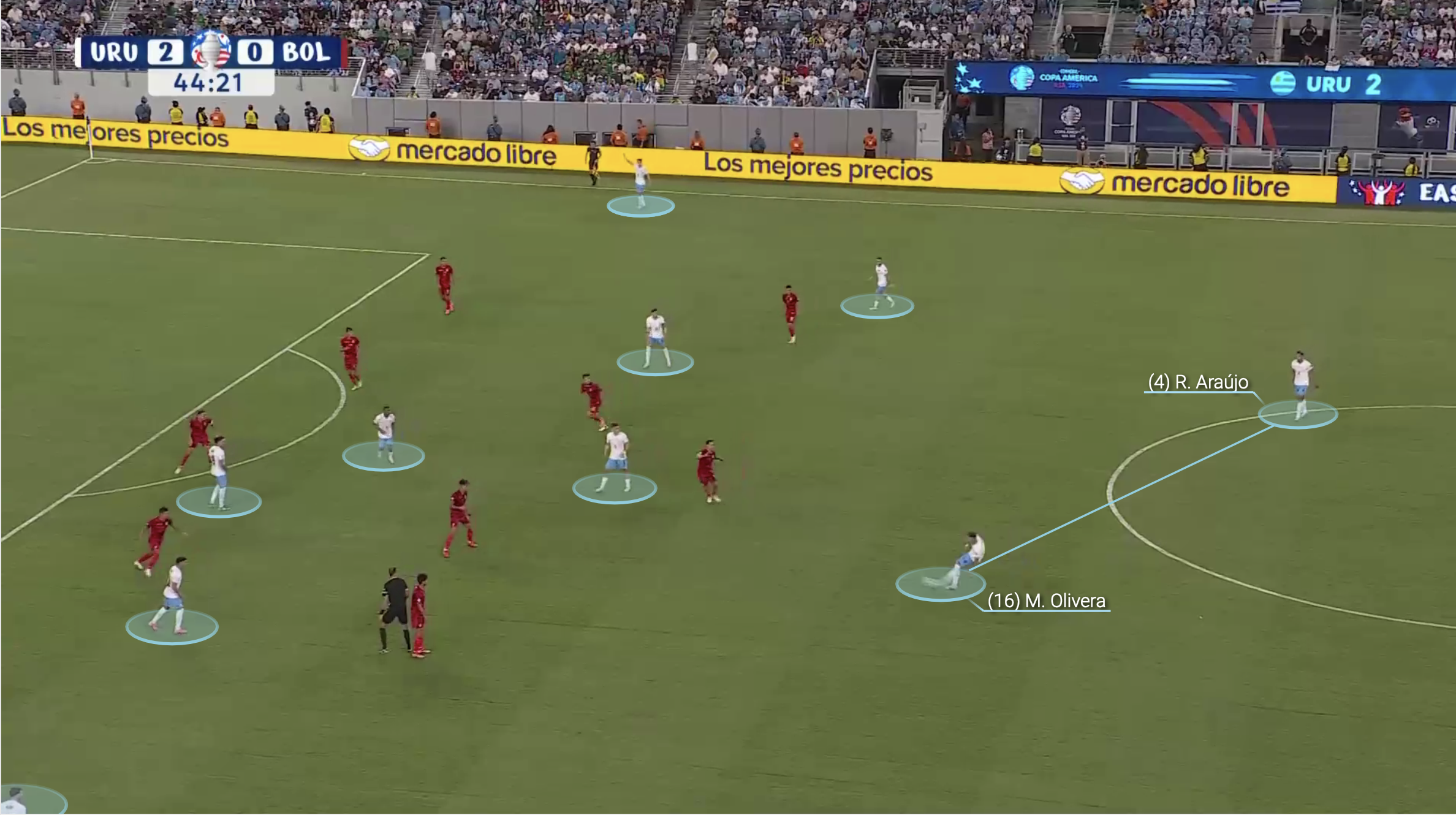
Their likeliest route to Copa America glory will see them face Brazil, Colombia and Argentina, but they have already beaten the former and the latter under Bielsa in consecutive games.
Uruguay are fired up and will not fear anyone.
(Top photos: Getty Images)
Source link : https://www.nytimes.com/athletic/5605875/2024/07/04/copa-america-power-rankings/
Author :
Publish date : 2024-07-04 06:02:48
Copyright for syndicated content belongs to the linked Source.












